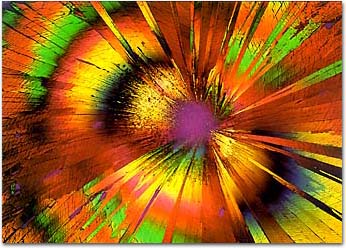Riboflavin Greeting Cards

Riboflavin is a water-soluble vitamin that was named from the Latin word flavius (yellow) to denote the deep color of crystals formed from the pure vitamin and the deep yellow color it gives to urine. Biochemically, riboflavin is metabolized to form the flavin coenzymes: flavin adenine dinucleotide (FAD) and flavin mononucleotide (FMN). The functional moiety in both coenzymes is riboflavin's isoalloxazine ring system, which serves as a two-electron acceptor in enzymatic biochemical reductions. Enzymes that use a flavin cofactor are termed "flavoproteins" and have been extensively studied. Common sources of riboflavin are almonds, yeast, cheese, eggs, chicken, beef, kidney, liver, and wheat germ. Clinically, riboflavin promotes normal growth, helps with the breakdown of fat, and assists in the synthesis of steroids, red blood cells, and glycogen. Symptoms associated with riboflavin deficiency are inflammation of the tongue, light sensitivity, itching, dizziness, insomnia, and slow learning.
|